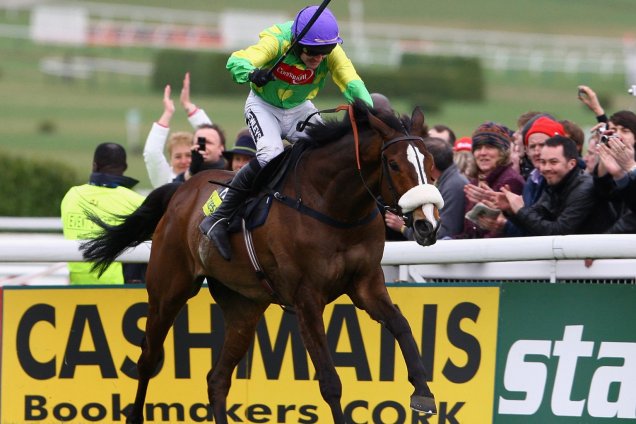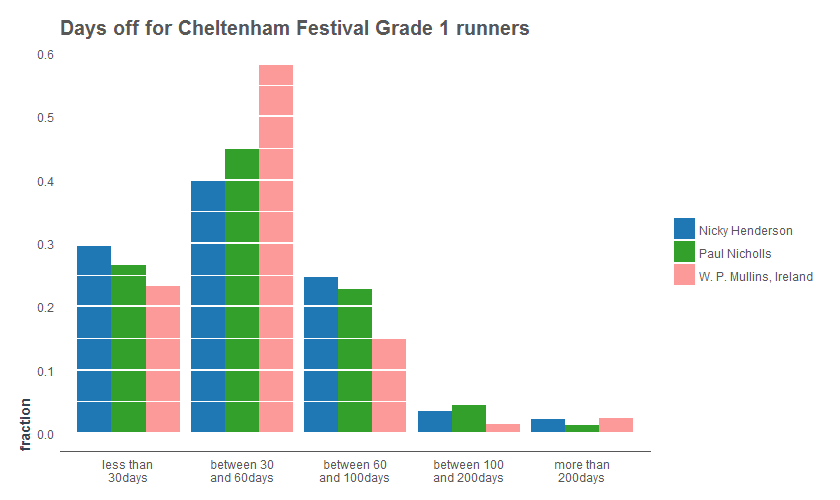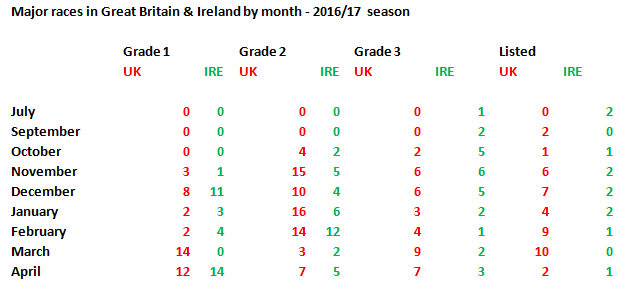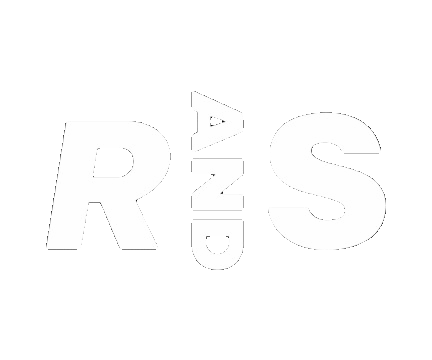3 minute read
We’re all aware of the fact that the Cheltenham Festival is the absolute pinnacle of the National Hunt season.

However when thinking about some of the major stars to grace the game in recent times, such as Kauto Star and Best Mate, they would generally run a couple of times before or around the Christmas period and then not be seen again until March.
Preparation towards the juicy Grade 1 contests at the Cheltenham Festival can be compared in football terms to the UEFA Champions League, which has just started its annual ‘winter break’. The Group stage of the competition has just concluded and the best clubs in European football have successfully earned their right for a tilt at the main prize in the Spring. With the identity of the participants assured (unlike in horse racing), the competition has taken a two month break until mid-February, before the big guns return to fight it out for the big prize.Admittedly, the ‘winter break’ in football exists for meteorological reasons, but are the big names in racing guilty of taking a similar length of break before their “Champions League” begins?
If you look at every single Grade 1 winner at the Cheltenham Festival over the last 10 years and the days spent away from the track before that win, some interesting patterns emerge.Accounting for the changing dates of the Festival and the length of the Christmas period, there’s generally a gap of around 74 days between the two. Whilst only 24 of the 133 winners in question fall under this particular bracket, it’s interesting that five of the last ten Cheltenham Gold Cup winners and three of the last ten Ryanair Chase winners have had at least this amount of time away from the track – suggesting that certain horses, staying chasers, perhaps, seemingly favour lighter schedules.
For example, Imperial Commander had absences of at least this long before both of his wins at the 2009 and 2010 Festivals, whilst Faugheen was treated to exactly 74 days off before his two triumphs in 2014 and 2015.It doesn’t take long for the figures to mount up in favour of a ‘mini-break’, either. Just 23 of the 133 winners in question had a run within 30 days of their Cheltenham victory – rendering much of February somewhat redundant from the prospect of top-class racing action. So, if the top runners are tending to avoid over-exertion in the New Year, are some trainers more guilty than others?

Extending the criteria from Grade 1 winners to include all runners in these contests, the graph above shows the habits of the three top trainers, Paul Nicholls, Willie Mullins and Nicky Henderson, over the last ten years.
What becomes apparent very quickly is that the majority of runners for all three trainers spent between 30 and 60 days away from the track before their runs at Cheltenham, meaning that their last run fell anywhere between the beginning of January and the beginning of February. Of the three, Willie Mullins adopted this approach most often, with just over 58% of his Grade 1 runners falling into this bracket.
However, it must also be pointed out that the second highest period of time for all three was less than 30 days, suggesting that longer absences (of over two months) are generally unfavoured by the big three, and the need for a prep run is seemingly deemed important.
So, if the trainers are prone to hesitancy towards the concept of running their big stars in the immediate run-up to the Festival,is it down to a “cotton wool culture” that’s engulfing the sport, or are we victims to a schedule tailored to gradually build up to Cheltenham – rather than steal its thunder?

Take this season, for instance. As you can see in the table above, there are a combined total of 19 Grade 1 contests in the UK and Ireland in December, compared with a total of just 11 across the whole of January and February.
It’s a strange shift in numbers, though admittedly there are also 30 Grade 2 contests across January and February in Great Britain alone. However, these races may not appeal as much to the absolute cream of the crop, who would have to carry penalty if they took part. Some sets of connection do take up this option, but a significant number are seemingly against the idea.
This all makes for some fairly uninspiring weekends in the first two months of the year – an opinion seemingly shared by the sport’s new terrestrial broadcasters, ITV Racing. They have promised to show 40 days of racing across the year on their main channel, with the rest being shown on ITV4. Fair, you may think – but if you examine the fixtures they’ve promised in detail, you’ll find that only the curtain raiser at Cheltenham on January 1 has made the billing before the Festival in March. This is in stark contract to the Flat season, which, from May until October, barely takes any time at all to take a breath.
For many, the Cheltenham Festival is the highlight of the racing year, but it seems odd – to a football fan at least – to host the sport’s Champions League Final at Cheltenham in March, without any gripping prequels in the immediate run-up.







